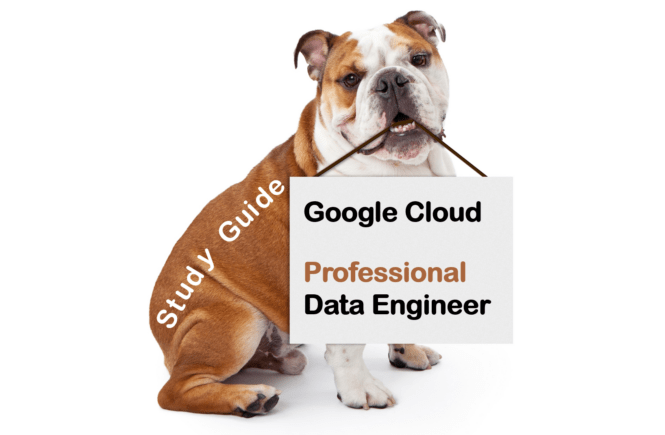GCP Cloud Digital Leader Preparation
Preparing for the GCP Cloud Digital Leader exam? Don’t know where to start? This post is the GCP Cloud Digital Leader Certification Study Guide (with links to each objective in the exam domain).
I have curated a detailed list of articles from the Google documentation and other blogs for each objective of the Google Cloud Platform Cloud Digital Leader exam. Please share the post within your circles so it helps them to prepare for the exam.
GCP Cloud Digital Leader Course Materials
| Coursera (Professional Cert.) | GCP Cloud Digital Leader Training |
| Pluralsight | Google Cloud Digital Leader Training |
| Udemy | Become a Google Cloud Digital Leader |
Google Cloud Digital Leader Practice Test
| Whizlabs Exam Questions | GCP Practice Test (150+ Qs) & Course |
| Udemy Practice Tests | Google Cloud Digital Leader Practice Test |
GCP Cloud Digital Leader Other Materials
| Amazon e-book (PDF) | Google Cloud Digital Leader book |
Check out all the other GCP certificate study guides
Full Disclosure: Some of the links in this post are affiliate links. I receive a commission when you purchase through them.
Section 1: Introduction to Digital Transformation with Google Cloud (approximately 10% of the exam)
1. Explain why cloud technology is revolutionizing business
a. Define key terms such as cloud, cloud technology, data, and digital transformation
2. Explain why it is critical for businesses to adopt new technology
a. Compare and contrast cloud technology and traditional or on-premises technology
On-Premise vs. Cloud: Differences, Benefits, and Risks
Why cloud is better than on-premise?
On-Premises vs. Cloud: What’s the difference?
b. Describe how customer expectations have changed because of cloud technology
Understand customer needs & expectations of the cloud
3 ways to outpace customer expectations with cloud
c. Identify the business and technical considerations that organizations need to think about when adopting cloud technology, including infrastructure; application, and business platform modernization; the importance of data; security in the cloud
Cloud adoption to accelerate IT modernization
Accelerate enterprise cloud adoption with app modernization
The importance of Big Data & Cloud Computing
Google Cloud security best practices
Modernize your cloud infrastructure
Section 2: Innovating with Data and Google Cloud (approximately 30% of the exam)
1. Describe the role of data in digital transformation and the importance of a data-driven culture
The role of data in digital transformation
Importance & advantages of a data-driven culture
a. Explain how cloud technology enables data to be applied in new ways
5 ways cloud storage and data enable the future of development
Why is Cloud Computing the answer to your Big Data initiatives?
Data culture enabled by the cloud accelerates time-to-value
2. Identify common Google Cloud solutions for data management
Database Solutions in Google Cloud
a. Recognize examples of structured and unstructured data
Understanding structured and unstructured data
Structured vs. unstructured Data 101
3. Identify common Google Cloud solutions for smart analytics
Data analytics solutions in Google Cloud
a. Articulate the business benefits of storing data in the cloud
5 advantages cloud storage brings to businesses
b. Apply appropriate business use cases for databases, data warehouses, and data lakes
Your Google Cloud database options explained
What is a data warehouse used for?
c. Explain the benefits of Google Cloud data products, including Looker, BigQuery, Cloud Spanner, Cloud SQL, Cloud Storage
What Is Looker? Benefits use, & more
Google Cloud SQL: How it can benefit you?
Key features of Google Cloud Storage
Amazon link (affiliate)
4. Identify Google Cloud’s solutions for machine learning and AI
a. Define artificial intelligence (AI) and machine learning (ML)
Artificial Intelligence vs. Machine Learning
Google Cloud Platform for Machine Learning & AI
b. Outline the importance of data quality in ML prediction accuracy
Data Quality and Machine Learning: What’s the connection?
Model Quality: Measuring prediction accuracy
The impact of data quality on Machine Learning
c. Describe Google Cloud’s differentiators with regard to AI and machine learning
What makes Google Cloud Platform different?
How does GCP differ from Azure and AWS?
Why ML capabilities of GCP is way ahead of AWS & Azure?
d. Recognize the ways customers can use Google Cloud’s AI and ML solutions to create business value
AI & Machine Learning products in Google Cloud
Business impacts of Machine Learning
Section 3: Infrastructure and Application Modernization with Google Cloud (approximately 30% of the exam)
1. Learn what modernizing IT infrastructure with Google Cloud means
Explain why legacy infrastructure struggles to deliver modern services to customers
Legacy systems in digital transformation: Risks & challenges
Why do legacy systems struggle to meet modern consumer expectations?
What are the biggest problems with legacy software?
8 challenges of legacy systems that businesses are facing
Explain the benefits of modernizing infrastructure with cloud technology
5 key benefits of infrastructure modernization
Migrate to Modernize: 3 key benefits of moving to the cloud
4 benefits of modernizing enterprise apps
Differentiate between hybrid and multi-cloud infrastructures
Multi-cloud vs. hybrid cloud: What’s the difference?
Differentiate between virtual machines, containers, and serverless computing within business use cases
VMs vs Containers vs Serverless Computing
VMs vs. Containers vs. PaaS vs. FaaS
Identify the Google Cloud solutions that help businesses modernize their infrastructure
Google Cloud infrastructure modernization solutions
GCP infrastructure modernization
2. Understand modernizing applications with Google Cloud
a. Describe the business drivers for modernizing applications
What are the drivers for application modernization?
Drive enterprise modernization with Google Cloud infrastructure
b. Describe the benefits of using cloud-native applications
Why Cloud-Native applications?
5 principles for cloud-native architecture
Cloud-native app development benefits
c. Apply the appropriate change pattern to different business use cases
d. Explain the benefits of Google Kubernetes Engine, Anthos, and App Engine for application development
Benefits of Google Kubernetes Engine (GKE)
Google Kubernetes Engine features & benefits
3. Understand the value of APIs
a. Explain how application programming interfaces (APIs) can modernize legacy systems
Unlock legacy applications using APIs
How APIs can Modernize legacy systems?
App modernization and the need for API management
b. Describe how APIs can create new business value
Using APIs to create new business value
API-first digital transformation
c. Explain the benefits of Apigee
Empowering Apigee with Google Cloud Platform
Section 4: Understanding Google Cloud Security and Operations (approximately 30% of the exam)
1. Describe financial governance in the cloud and Google Cloud’s recommended best practices for effective cloud cost management
a. Explain how adopting cloud technology affects the total cost of ownership (TCO)
Understanding cloud pricing – Cloud TCO
b. Identify the cost management strategy needed in a given business scenario
Strategy for optimizing cloud billing cost management
2. Describe a cloud security approach and Google Cloud security benefits
a. Define fundamental cloud security terms, including privacy, availability, security, and control
What is data privacy in Cloud Computing?
Google Cloud Platform (GCP) security fundamentals
Security, Privacy, and Cloud Compliance
b. Explain what is meant by a “shared responsibility model”
Shared responsibility model in GKE
c. Describe the security benefits of using Google Cloud
Google infrastructure security design overview
Understand security features in GCP
d. Identify today’s top cybersecurity challenges and threats to data privacy
Top 10 cybersecurity challenges
7 types of cyber security threats
e. Demonstrate how organizations can control and manage access to cloud resources
Using resource hierarchy for access control
Access control for projects with IAM
Resource access control IAM roles & permissions
Manage access to projects, folders, and organizations
Managing access to compute engine resources
3. Explain how IT operations need to adapt to thrive in the cloud
a. Differentiate service availability requirements in the cloud versus in on-premises environments
On-premise vs. cloud computing
b. Describe the operational challenges that DevOps solves
DevOps 101: What problems does DevOps solve?
How does DevOps solve the top 5 challenges?
c. Apply the goals of site reliability engineering (SRE) to different business use cases
Implement Site Reliability Engineering
SRE: Approach to achieve DevOps objectives
4. Identify Google Cloud solutions for cloud resource monitoring and application performance management
a. Explain the potential impact of unexpected or prolonged downtime
Top 5 ways system downtime impacts your company
b. Define monitoring, logging, and observability within the context of cloud operations
Designing for observability on Google Cloud
c. Identify the Google Cloud resource monitoring and maintenance tools
Cloud Monitoring in Google Cloud
Maintenance on Cloud SQL instances
This brings us to the end of the GCP Google Cloud Digital Leader Study Guide.
What do you think? Let me know in the comments section if I have missed out on anything. Also, I love to hear from you about how your preparation is going on!
In case you are preparing for other GCP certification exams, check out the GCP study guide for those exams.
Follow Me to Receive Updates on CGP Exam
Want to be notified as soon as I post? Subscribe to the RSS feed / leave your email address in the subscribe section. Share the article to your social networks with the below links so it can benefit others.





